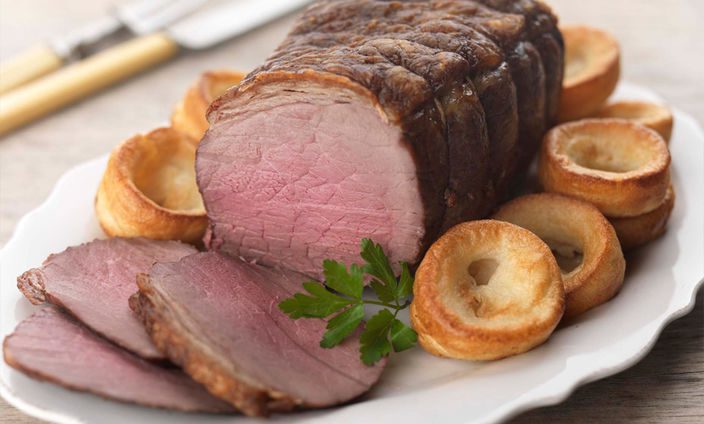
How to cook a roasting joint
Cooking meat should never be complicated and most people are afraid to cook joints due to a lack of experience. This short and simple guide to cooking your perfect roasting joint helps in taking the pressure away and lets you focus on things that really matter. We also have a range of options for roasting at home including our extensive beef, lamb, and pork roasting joints.
Ingredients:
- Cooking oil
- Salt and pepper
- 1-2 onions quartered
- 1-2 carrots cut into chunks (or/and some turnip chunks)
- 1-2 celery sticks cut into chunks
- 2-3 garlic cloves
- 1-2 bay leaves
- Beef stock or vegetable stock (or water)
- Red wine
For the gravy: cream, butter, redcurrant jelly, red wine
Method
Allow the meat to come to room temperature before you cook it. This can take more than an hour, depending on the size of the joint.
Preheat the oven to 240°C/Gas mark 9.
Remove all packaging from the meat and pat dry with kitchen towel.
Rub the meat all over with oil and season with salt and black pepper and place in a roasting tray.
Add 1-2 onions quartered, 1-2 carrots and celery sticks cut into big chunks and 2-3 garlic cloves to the tray.
Place the tray in the oven and allow to brown the meat and vegetables for 15 – 20 min at high temperature (30 minutes for large joints).
Reduce the oven temperature to 180°C and add 1″ of liquid and 1-2 bay leaves to the tray. For the best gravy this liquid should be beef stock and some red wine, but vegetable stock or just water will give good results too. Top up the liquid from time to time.
Cooking times per 1lb/454g of meat:
- 12 – 13 minutes for rare beef
- 17 – 18 min for medium beef
- 22 – 24 min for well-done beef.
Once cooked take the tray out of the oven and transfer the meat to a warm plate, cover loosely with foil and allow to rest for 30 minutes in a warm, but not hot place. Mini roasts will only require 15 minutes. This allows the juices, which have been drawn to the centre of the meat during cooking to be reabsorbed and the meat will be far more tender and juicy and will be easier to carve.
Whilst the meat is resting add a little more liquid in the oven tray to dissolve all the caramelised cooking juices on the side of the tray. Tip all the contents of the tray into a sieve and strain the liquid into a saucepan. Pass as much of the vegetables as you can through the sieve. All the precious flavours should now already be in the gravy and you only need to add some flour to thicken the gravy and season with salt and pepper.
Good gravy is an art in itself and a range of ingredients can be used – just make sure to taste frequently. Popular ingredients are red or white wine, vinegar, redcurrant jelly, cream, butter, chili, thyme (in small amounts).
Arrange the meat on a platter and serve with your favourite vegetables, the gravy, mustard and horseradish sauce and carve the meat with a sharp knive into generous slices.